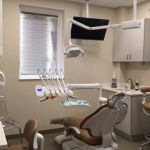Understanding Periodontal Diseases: An In-Depth Guide
Dentistry Toothtruth is committed to providing comprehensive information on oral health. One of the critical topics that need attention is periodontal diseases. These diseases rank among the most common dental issues affecting millions of people in the United States. Periodontal diseases, or gum diseases, encompass a range of conditions that affect the supporting structures of the teeth, leading to the destruction of periodontal ligaments and alveolar bone.
Periodontal diseases pose a significant public health challenge, with over 47% of adults aged 30 and above in the U.S. being affected according to the CDC. The primary culprit behind these diseases is plaque—a sticky, colorless film of bacteria that forms on teeth. While good oral hygiene can prevent their development, untreated plaque can harden into tartar, leading to inflammation of the gums or gingivitis, and eventually more severe forms of periodontal disease. Through this article, readers will gain a clearer understanding of periodontal diseases, their causes, symptoms, treatment, and how they can maintain optimal oral health.
Causes of Periodontal Diseases
Periodontal diseases are primarily caused by bacterial infection due to plaque buildup on teeth. Plaque forms when food debris mixes with bacteria and saliva, creating an acidic environment. If not removed through regular brushing and flossing, it hardens into tartar which requires professional cleaning to eliminate.
Contributing factors to plaque accumulation may include poor oral hygiene, smoking or tobacco use, genetic predisposition, and certain medical conditions such as diabetes. Each of these factors can exacerbate the likelihood of developing periodontal diseases by influencing the body’s inflammatory response or altering the mouth’s microbiome.
According to research, smoking doubles the risk of gum disease. The impact of lifestyle factors and systemic health highlights the importance of a holistic approach in managing periodontal diseases and maintaining oral health through integrated care strategies.
Symptoms and Diagnosis
The symptoms of periodontal diseases vary depending on the stage of the disease. In the early stages, they may include red, swollen gums that bleed easily, bad breath, and gum recession. As the disease progresses, these symptoms can intensify, leading to deep pockets forming between teeth and gums, loose teeth, and even tooth loss.
Diagnosis of periodontal diseases typically involves a comprehensive dental examination, including measuring the depth of the gingival crevices around the teeth with a periodontal probe. Dental professionals may also use dental X-rays to assess any bone loss. Early detection and diagnosis are critical in preventing further damage and implementing effective treatment strategies.
Regular dental check-ups are essential for catching periodontal diseases before they advance, underscoring the importance of routine visits to dental care providers like those recommended by Dentistry Toothtruth.
Types of Periodontal Diseases
Periodontal diseases encompass several conditions, the most common being gingivitis and periodontitis. Gingivitis is the mildest form, characterized by inflammation and bleeding of the gums without affecting the bone.
Periodontitis, on the other hand, occurs when gingivitis is left untreated. It leads to chronic inflammation and the destruction of tissue and bone supporting the teeth. There are various forms of periodontitis, including chronic periodontitis—the most prevalent, aggressive periodontitis, and necrotizing periodontal disease, mainly affecting individuals with systemic conditions.
The correct identification of the type of periodontal disease is crucial for effective treatment planning and achieving positive patient outcomes.
Treatment Options
Effective management of periodontal diseases involves a combination of professional dental care and home oral hygiene. Treatments may include deep cleaning, known as scaling and root planing, to remove plaque and tartar from below the gum line.
In more severe cases, surgical interventions like flap surgery, bone grafts, or guided tissue regeneration may be necessary to restore lost tissue and bone. Advanced treatment modalities focus on controlling infection and promoting healing over time.
Maintaining good oral hygiene at home is critical in managing periodontal diseases. This includes regular brushing and flossing, using antimicrobial mouthwash, and adhering to dietary recommendations. Consistent follow-up care with dental professionals is vital to monitor progress and prevent recurrence.
Prevention Strategies
Preventing periodontal diseases is inherently tied to maintaining proper oral hygiene. Regular brushing and flossing significantly reduce the risk of plaque accumulation. Using fluoride toothpaste and antibacterial mouthwash can enhance these preventive measures.
Routine dental check-ups and cleanings are essential in catching early signs of periodontal diseases and addressing them before they advance. A balanced diet, avoiding tobacco products, and managing conditions like diabetes through lifestyle and dietary changes can further reduce the likelihood of developing these diseases.
At Dentistry Toothtruth, education on preventive strategies is a cornerstone of patient care, helping individuals understand the importance of proactive measures in oral health.
The Role of Diet and Lifestyle
Diet and lifestyle have profound impacts on oral health, influencing the development and progression of periodontal diseases. Consuming a diet rich in vitamins C and D, antioxidants, and omega-3 fatty acids supports gum health and reduces inflammation.
Lifestyle choices such as smoking cessation and limiting alcohol consumption also play vital roles in maintaining healthy gums. Regular physical activity and stress management techniques can further bolster the immune system and enhance overall well-being, indirectly benefiting oral health.
Encouraging a holistic approach to lifestyle choices promotes sustainable health behaviors that contribute to the prevention of periodontal diseases.
Conclusion and Call to Action
Periodontal diseases represent a significant health concern impacting millions of Americans. Understanding the causes, symptoms, and treatment options is fundamental in preventing and managing these diseases. Emphasizing early detection through regular dental visits, like those recommended by Dentistry Toothtruth, ensures timely intervention and reduces the risk of severe complications.
Actionable steps, such as improving oral hygiene, making informed dietary choices, and managing lifestyle factors, are crucial in effectively addressing the challenges posed by periodontal diseases. By prioritizing dental health and seeking proactive care, individuals can protect their gums and maintain a healthy smile throughout their lifetime.







 Richards & Associates Orthodontics4.0 (228 review)
Richards & Associates Orthodontics4.0 (228 review) Gulf Coast Oral and Facial Surgery4.0 (267 review)
Gulf Coast Oral and Facial Surgery4.0 (267 review) Pediatric Dental Of Grafton5.0 (7 review)
Pediatric Dental Of Grafton5.0 (7 review) Milford Dentist Office4.0 (189 review)
Milford Dentist Office4.0 (189 review) Cary Family Dental Kildaire Properties II5.0 (2 review)
Cary Family Dental Kildaire Properties II5.0 (2 review) The Dentists, LLC5.0 (180 review)
The Dentists, LLC5.0 (180 review) The Importance of Oral Health Education During Pregnancy for a Healthy Pregnancy
The Importance of Oral Health Education During Pregnancy for a Healthy Pregnancy Best Tips for Brushing Your Teeth Properly for Healthy Gums: Essential Techniques for Oral Health
Best Tips for Brushing Your Teeth Properly for Healthy Gums: Essential Techniques for Oral Health Why Skipping Dental Checkups Can Lead to Bigger Oral Health Problems
Why Skipping Dental Checkups Can Lead to Bigger Oral Health Problems Advantages of Porcelain Dental Restorations
Advantages of Porcelain Dental Restorations How Can Diabetes Cause Tooth and Gum Problems? Preventing and Managing Oral Health Issues
How Can Diabetes Cause Tooth and Gum Problems? Preventing and Managing Oral Health Issues Healthy Habits for Promoting Good Oral Health and Hygiene: Tips for a Healthy Smile
Healthy Habits for Promoting Good Oral Health and Hygiene: Tips for a Healthy Smile